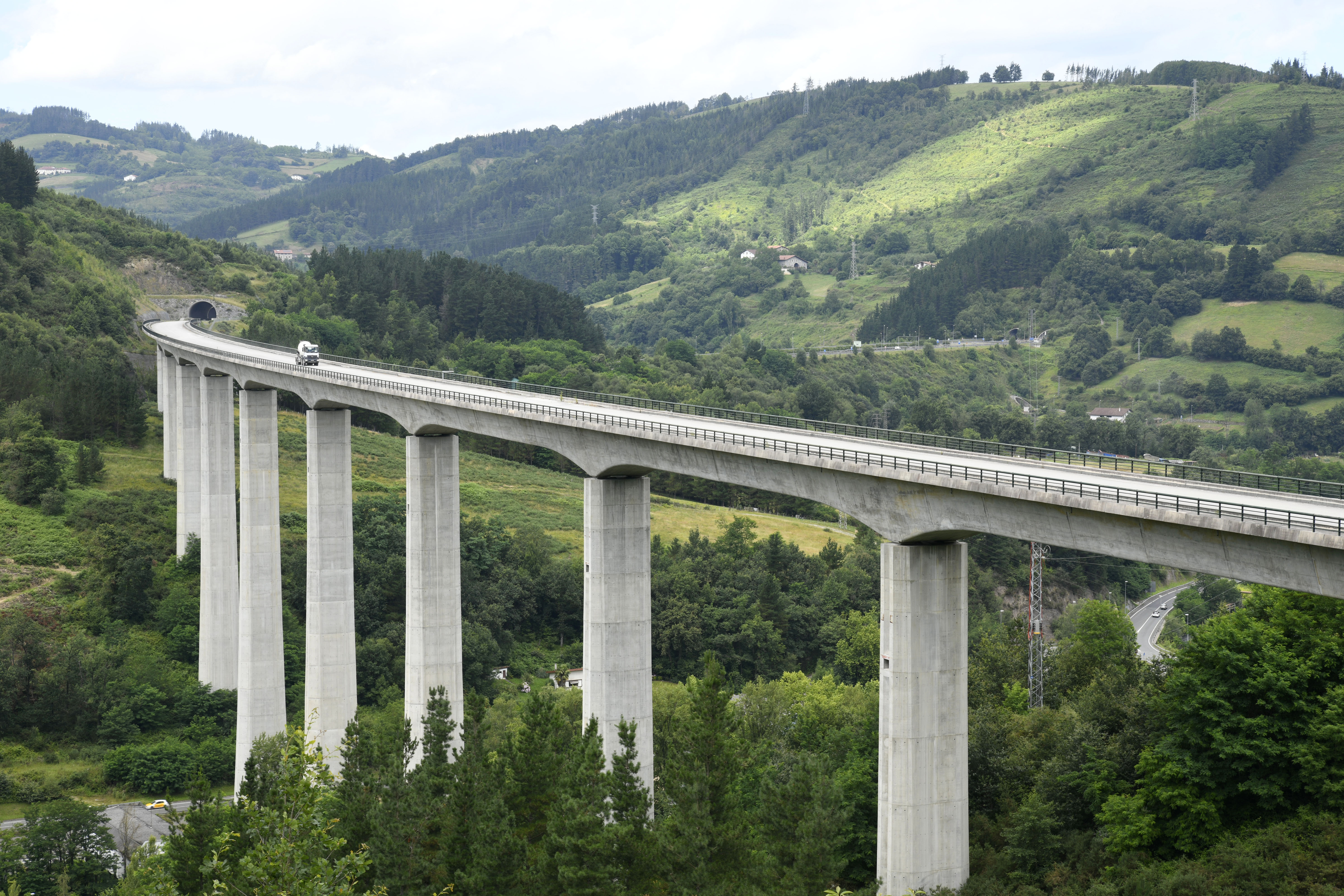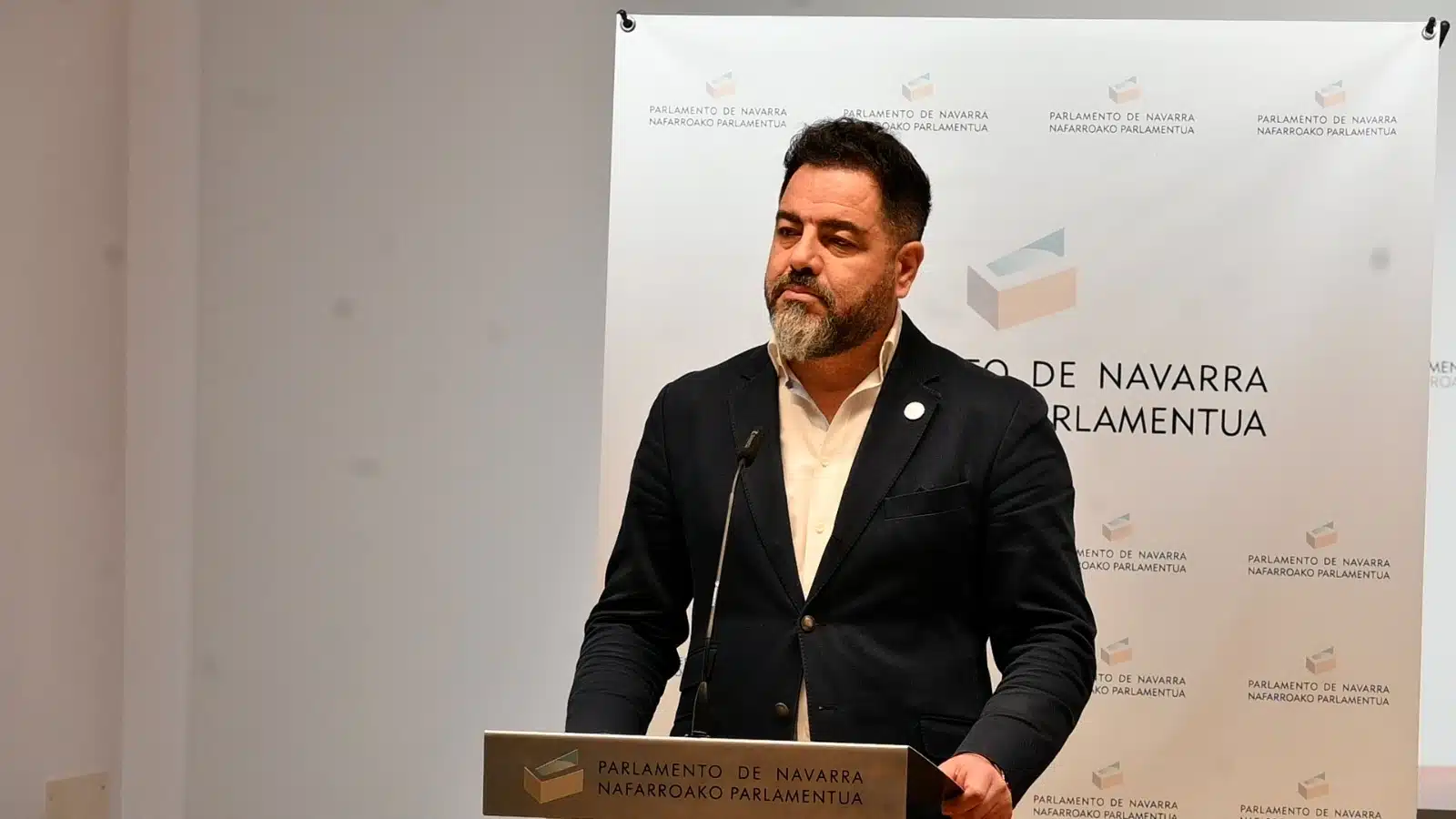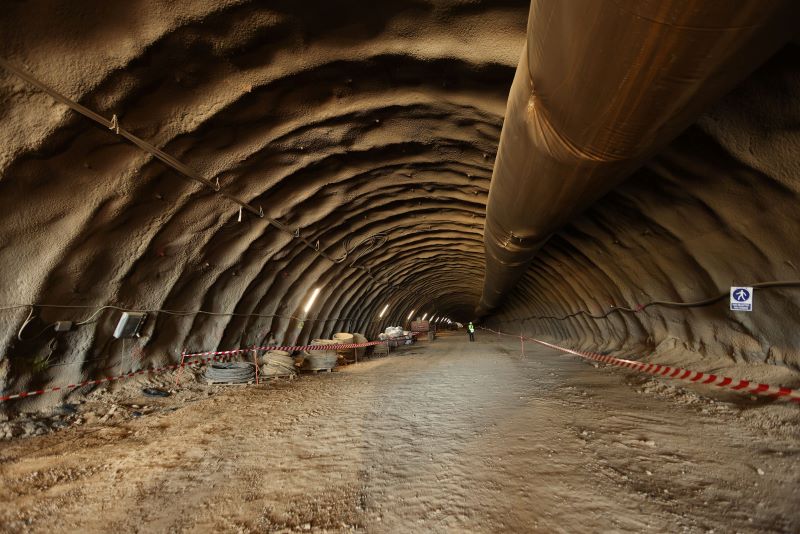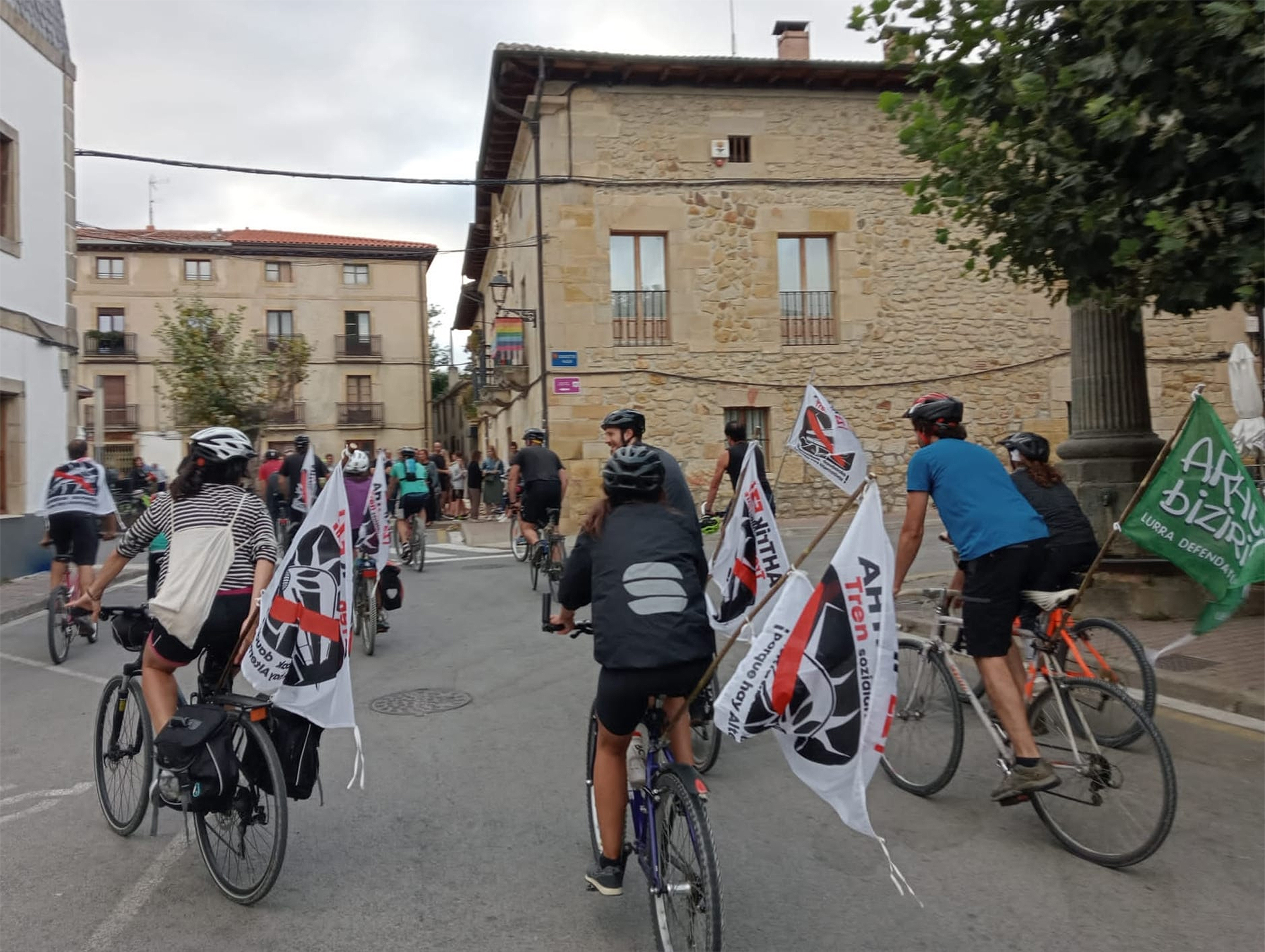"Y Vasca" doesn't help move the truck from road to rail
- This is one of the main conclusions of the research conducted by three UPV professors. According to them, the Basque Y will transport a similar amount of goods by 2030 in 2012 if it is already in place. With regard to passengers, Basque Y is expected to have a passenger density of 5.8 million by 2030. According to global standard calculations, to make a high-speed line profitable, the annual passenger density would be 10 million passengers.

The study was conducted by professors of the UPV/EHU Gorka Bueno, Andoni Kortazar and David Hoyos, based on studies conducted by public institutions. The passenger data was extracted from the study carried out by the Spanish Railway Structure Manager (ADIF) in 2015, the last public event. However, the freight calculations have mainly been carried out with data for the terminal train being carried out in the industrial estate of Jundiz in Álava. This terminal is key to freight transport, as it will carry out freight transactions from both the north and the south of one type of rail to another.
The three professors are part of the Ekopol university group and warn in the published article that it is not understandable that the Councillor for the Environment, Territorial Planning and Housing of the Basque Government does not provide data on the transport of goods that the Basque Y will have: “It is surprising that the most expensive work ever planned in the CAPV, when it is already 30 years since the start of works in 1992, does not have a robust analysis of transport demand justifying an investment of €10 billion.”
"It will not guarantee minimum socio-economic profitability, it will not contribute to the fight against climate change or to the movement of vehicles from road to rail"
Researchers also question the profitability of the gigantic infrastructure under construction: “Taking as a reference this year (2030), it is noted that this demand does not guarantee a minimum socio-economic return nor will it contribute to the fight against climate change or the significant movement of vehicles from road to rail.”
Few passengers, without profitability
The Adif 2015 study addresses different alternatives, with the most optimistic of them providing the following travel figures for the next 30 years: “3.8 million passengers in 2020, 5.8 million in 2030, 6.9 million in 2040 and 7.6 million in 2049.” It is clear that 2020 has not been achieved, because the infrastructure is still unbuilt. The 2030 scenario also presents difficulties: on the one hand, capital stops should already be in operation, which is very difficult, which could be solved, since in the forecasts of the authorities the fast train can start in its first steps with provisional stations.
However, it is more difficult to meet this optimistic figure of 5.8 million passengers, as by 2030 the high-speed infrastructures being built in the vicinity should be in place: After completing the Burgos and Vitoria section, the Navarre corridor also with the line running between Madrid and Lisbon and the line between Dax and Hendaia. “Without them, trafficking would be much lower,” the researchers say. In any case, no provision reaches 10 million passengers annually considered as socio-economically profitable.
The prospects of the Basque Y are also low compared to the passenger density of other countries in the world: In data prior to the COVID-19 International Rail Union pandemic, the passenger density in France was 22 million per year, in China another 22 million and in Taiwan and Japan some 35 million. That is, four times fewer passengers than France and China and six times less than Taiwan or Japan.
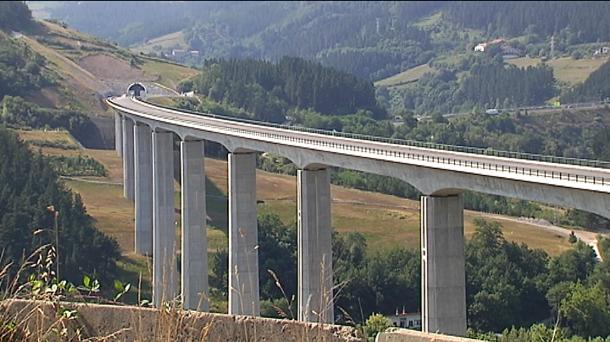
TAV to deliver 2012 sales by 2030
Firstly, it should be made clear that the Spanish and French TAV networks are not prepared for freight transport. However, the Basque Y or the Navarros corridors do so officially as high-performance routes. This means that passenger trains cannot exceed 220 km/h and 120 km/h for goods.
To set the quantities of goods to be transported, the Ekopole teachers have used the data foreseen in 2019 by the Basque Government and Adif for the Jundiz terminal under construction. Two scenarios are envisaged which have been used by the most optimistic. According to this, 1.58 megatons (Mt) of the Basque Y would be sold in 2030.
The authors of this report also have doubts about the completion of this data, mainly for two reasons: on the one hand, from 1.58 Mt to 0.25 Mt, but to do so, the South Bilbao Railway and the Serantes Tunnel should be built in order to reach the port of Bilbao, and on the other hand, the teachers say that Bilbao already has a dry port in Arasur, near Miranda de Ebro. In addition, the motorways of the train are also not being very successful and according to the data provided for the Jundiz terminal, only twelve lorry-loaded trains would pass through that station of the day, or so, some 194 lorries a day. This would be the number of trucks that the TAV would take off the road. From Irun 10,000 trucks pass daily.
Basque Y hampers energy transition
Summarised: La Y Vasca would have 12 trains per day of 500 tons, equivalent to the freight traffic that in 2012 brought the traditional railways to the port of Bilbao (line 720). In other words, of the 13.06 Mt expected by 2030 from the official studies of economic, social and financial profitability carried out in 2015, the Basque Y will only transport 12.1%.
From these data, it is concluded that investment in the Basque Y hampers the energy transition in the fight against climate change, and that both authorities make insufficient forecasts in the APR infrastructure, as Airef Español (Independent Tax Liability Authority) or the European Union Courts of Auditors have warned.
Do not look for this connection from Ezkio or Altsasu, let alone crossing the Ebro River through Castejón. The connection, or rather the connections, between the Basque Y and the AVE of Navarre is already a reality. It is these links in the plural that should concern us and... [+]
EAE, Akitania Berria eta Nafarroak osatutako euroeskualdearen batzarra egin dute Iruñean martxoaren 25ean. AHT izan dute topaketaren ondoko agerraldiko aipagai nagusien artean eta Akitania Berriko ardatza Hego Euskal Herriko trenbidearekin lotzeko konpromiso politikoa... [+]
Datorren udaberrian, Stop AHT Zundaketak ekimenak bi urte beteko ditu. 2023ko maiatzean, ADIFek Itza, Sakana eta Goierriko udalei jakinarazi zien zundaketa geoteknikoak eta beste jarduketa batzuk egingo zituela AHTaren Nafarroako korridorea Euskal Y-arekin lotzeko alternatibak... [+]
Josu Estarrona EH Bilduko Arabako senatariak egindako galderari erantzun dio Espainiako Sustapen Ministerioak, eta hor berretsi du Ezkioko aukera zailtasunez beteta dagoela.
"Gasteiztik egin ezean, ez da egingo", adierazi du PSNren bozeramaile Ramón Alzorrizek. Kontra azaldu dira Geroa Bai, UPN eta PP.
In recent weeks we have been reading "proposals" for the recovery of the railway line Castec-Soria and the maintenance of the Tudela train station in its current location, or for the construction of a new high-speed station outside the urban area with the excuse of the supposed... [+]








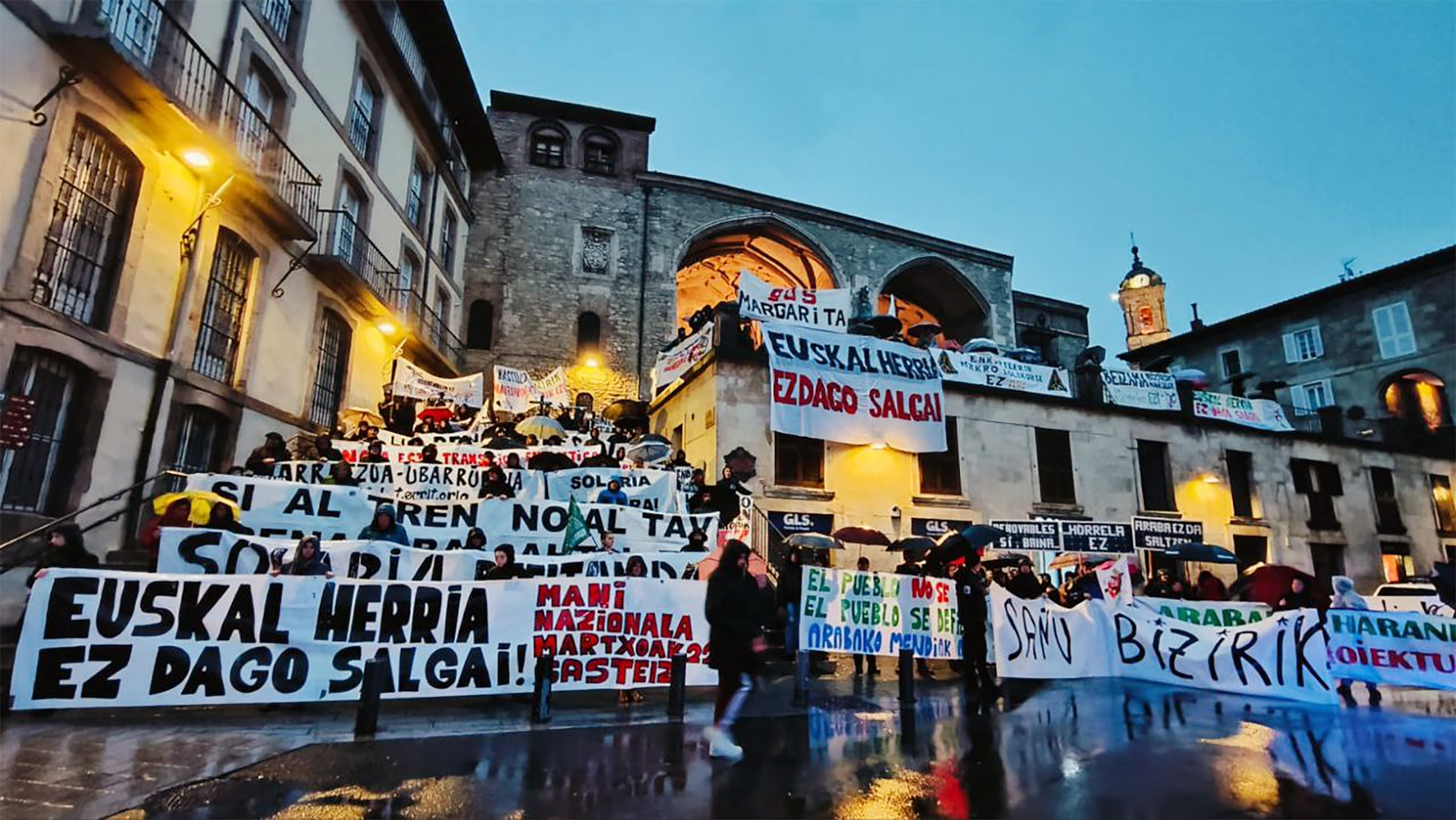
.jpg)

